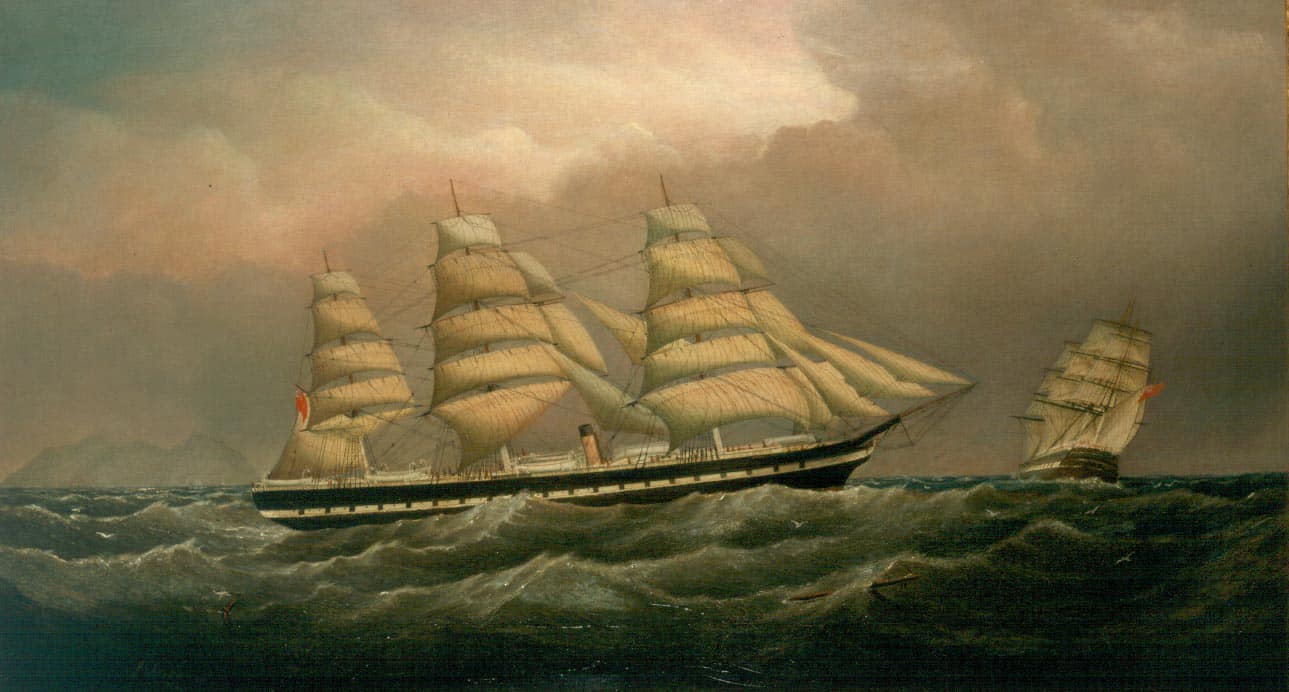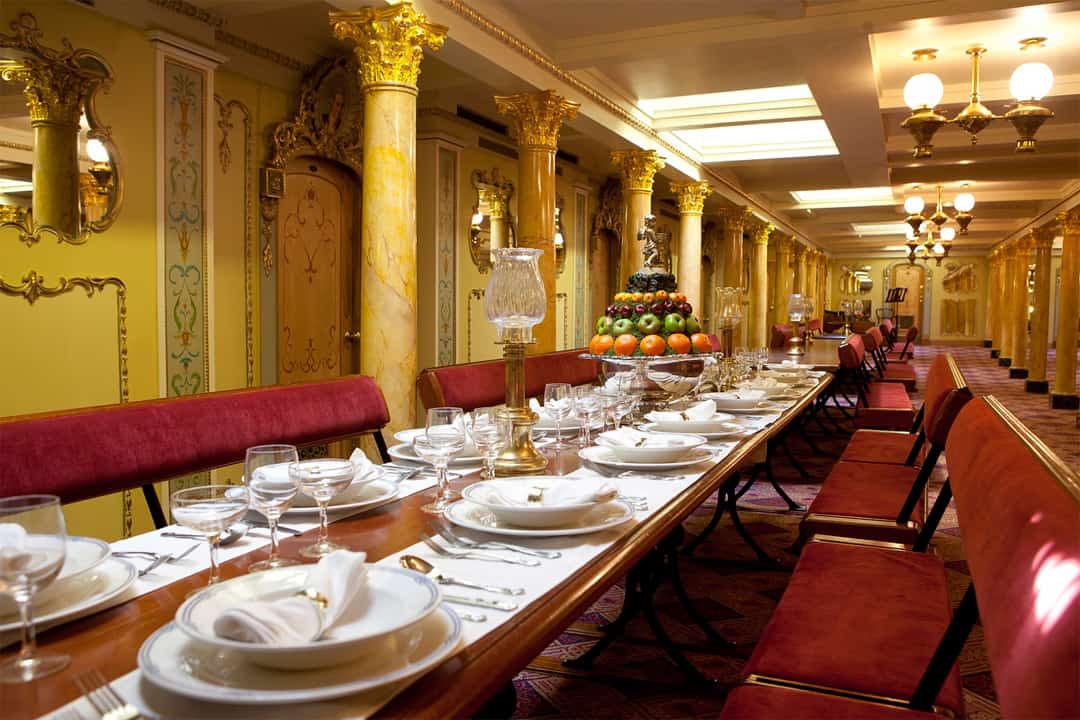Passengers and Their Stories
Luxury at Sea
In the early years the ship was a luxury liner and her first class passengers came from amongst the most affluent in society. A Young Queen Victoria, who made an official visit in 1845, was impressed by the ship’s comfort and style. At 26 guineas each a ticket was equivalent in price to a trip on Concorde.
It also bought them fine dining. J.M.Hardwick’s diary entry on 26 August 1852 recalls an impressive Victorian menu:
“…dinner which was first rate, quite such as you would get at the best hotels: soup, grouse, pigeon and veal pies, pork, ham and other meat dishes, sundry puddings and tarts and jelly, blancmange, cheese, celery and after all a dessert.”
And the ship’s bar stocked wine, spirits and porter. The high bar bills did not suppress a thirst and many passengers spent their voyages the worse for wear!
But Not For All!
Those in steerage (or in third class) travelled in difficult conditions. Passengers such as Scottish emigrant Allan Gilmour have left graphic descriptions of life on board during the long voyage to Australia.
“Our berths are pretty well ventilated, but very confined and dark” he wrote in his diary in 1852. “The distance between our berths… is 2ft broad and 6ft long, so confined that only one can dress at once.”
Life in steerage was bearable as long as passengers got on with each other. The biggest problem for most people was not the food or beds, but their fellow passengers.
The Love Boat
Romance may well have blossomed during those long voyages, and many female passengers travelled alone to Australia where they would marry their fiancés soon after arrival. Clara Aspinall wrote in 1862 of:
“eight or ten unmarried ladies on board, some with parents others under the care of our Captain… he has no sooner cast anchor in Hobson’s Bay than he has to deck himself in bridal array, and hasten to church to perform the fatherly office of giving away a bevy of fair charges.”
Animals Ahoy!
The SS Great Britain also carried non-human passengers. One list, compiled in 1864, includes one cow, three bullocks, 150 sheep, 30 pigs, 500 chickens, 400 ducks, 100 geese and 50 turkeys. And enough feed to keep them all fat for the table!








